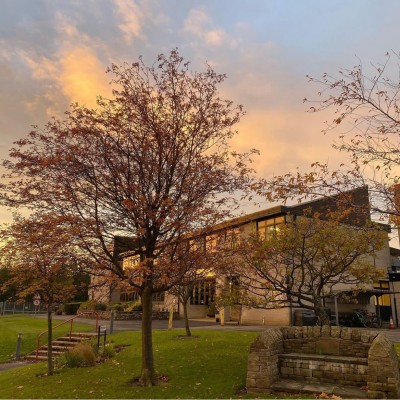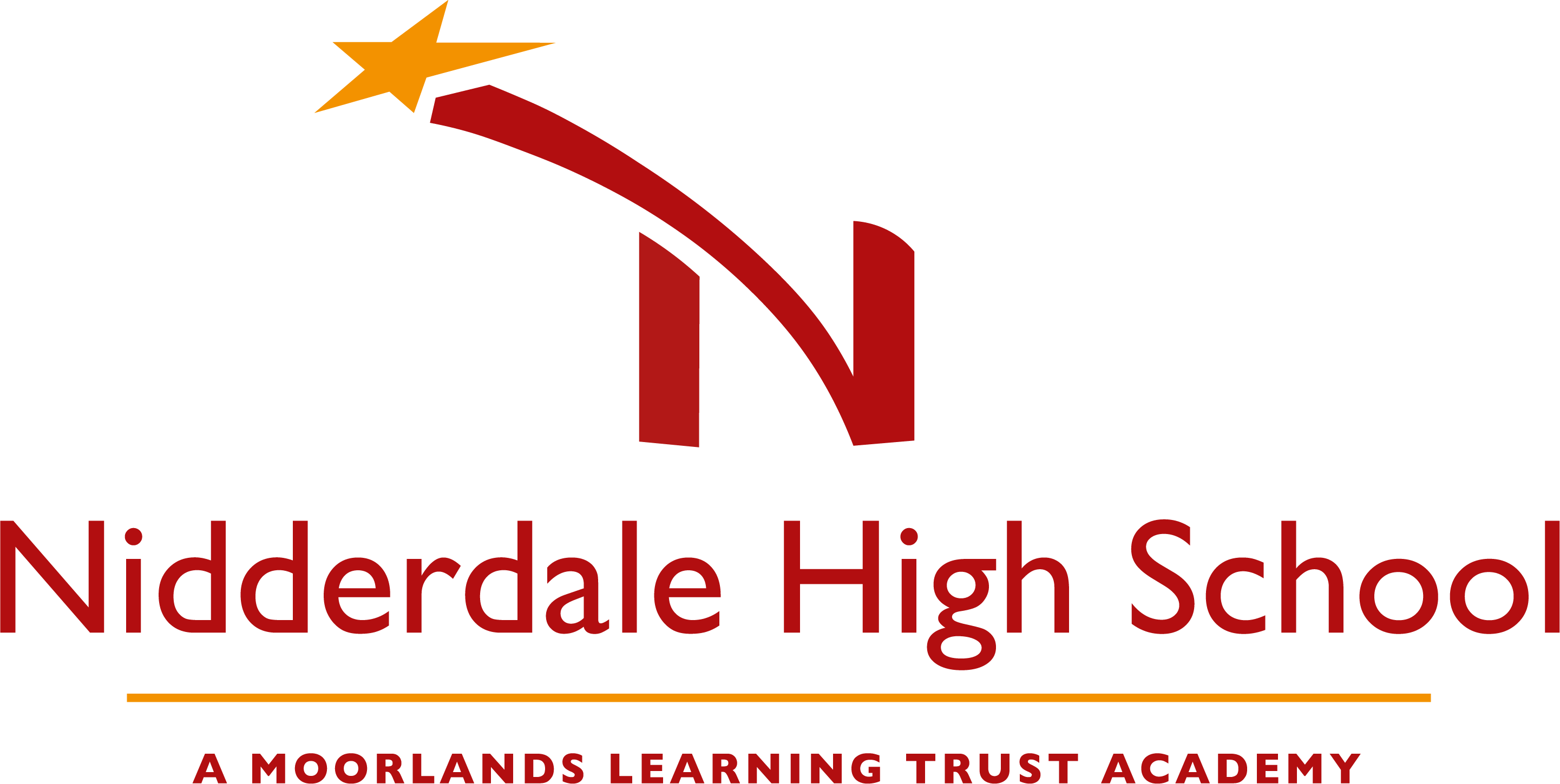- Welcome To Nidderdale
- Vision and Values
- Admission
- British values
- Calendar
- School Day
- Data Protection
- Equality and Diversity
- RED Award
- Governance
- Governors Access Area
- KS4 Results
- Moorlands Learning Trust
- Ofsted Reports and School Performance Tables
- Policies
- Prospectus
- RED KITE ALLIANCE (incl. Teacher Training)
- Safeguarding
- SEND Information
- Staff
- MLT Staff Access Area
- Supporting Students with Medical Conditions
- Vacancies
As an Academy, although Nidderdale High School has the ability to set its own admissions policy, we choose to follow the criteria set out by North Yorkshire Council who manage this process and subsequent appeals. The admission arrangements are compliant with the School Admissions Code 2021, the School Admissions Appeals Code and relevant human rights and equalities legislation. Any complaints about admission arrangements are dealt with by the School’s Adjudicator.
Admission arrangements
The proposed admission arrangements for NHS from September 2026 are:
NHS has an agreed published admission number (PAN) of 85 students. NHS will accordingly admit 85 students in the relevant age group each year if sufficient applications are received; and
If, at any time following determination of the PAN, the admission authority decides that it is able to admit above this number, NHS will inform North Yorkshire Local Authority and reference this change on the school’s website. Such change will not constitute an increase to the PAN. Students will not be admitted above these agreed numbers unless in exceptional circumstances.
Process of application
Applications for places at the academy will be made in accordance with North Yorkshire Local Authority’s coordinated admission arrangements and parents/carers will complete their home Local Authority Common Application Form. NHS will use the following timetable for applications each year (exact dates within the months may vary from year to year) which, whenever possible, will fit in with the common timetable agreed by North Yorkshire Local Authority:
July – The academy will publish on its website information about the arrangements for admission, including oversubscription criteria, for the following September (e.g. in July 2025 for admission in September 2026). This will include details of open evenings and other opportunities for prospective students and their parents/carers to visit the academy.
Please note that, to be considered for admission, all applicants must complete and submit their home Local Authority’s common application form, including NHS as one of their preferences. The academy will also provide information to the Local Authority for inclusion in the composite prospectus, as required.
September/October – the academy will provide formal opportunities for parents/ carers to visit.
By 31 October – parents/carers complete the Common Application Form of their home Local Authority and return it to their home Local Authority to administer.
March – one offer of a school place is made to parents/carers by North Yorkshire Local Authority.
Parents/carers can make an appointment to visit the school at any time during the academic year.
Consideration of applications
North Yorkshire Local Authority co-ordinates the allocation of places and make the offers on our behalf.
Where fewer than 85 applications are received, all students will be offered a place at NHS.
Students with an Education, Health and Care Plan
The admission of students with an Education, Health and Care Plan is dealt with by a separate procedure. Such children will be admitted to the named school without reference to the oversubscription criteria below.
Procedures where NHS is over-subscribed
All preferences - first, second, third, fourth and fifth - that NHS receives will be considered equally. Children in a higher priority group will be offered a place ahead of children in a lower priority group. Where more than one preference can be met, the highest ranked preference will be offered.
The priority groups for NHS are:
- Looked after children and all previously looked after children for whom the school has been expressed as a preference.
Children who appear to the admissions authority to have been in state care outside of England and cease to be in state care as a result of being adopted.
This applies to all looked-after children, including those who are in the care of another local authority or being provided with accommodation by a local authority in the exercise of their social services function at the time of making an application.
Previously looked after children are children who were looked after but ceased to be so because they were adopted or became subject to a child arrangement order or special guardianship order. In the case of previously looked after children, a copy of the relevant documentation will be required in support of the application. This includes children who were adopted under the Adoption Act 1976 and children who were adopted under the Adopted & Children's Act 2002. Child Arrangements Orders replace residence orders and any residence order in force prior to 22 April 2014 is deemed to be a Child Arrangements Order.
A child is regarded as being in state care outside of England if they were accommodated by a public authority, a religious organisation or any another provider of care whose sole purpose is to benefit society.
- Children the authority considers have special social or medical reasons for admission.
We will only consider applications on social or medical grounds if they are supported by a professional recommendation from a doctor, social worker, or other appropriate professional. The supporting evidence should set out the particular social or medical reasons why the school in question is the only school and the difficulties that would be caused if the child had to attend another school. Panels of professionally qualified people will consider all applications made under priority group 2.
- Children living within the catchment area of the school.
If there are not enough places for all the children in this priority group, we will give first priority to children with a sibling at the preferred school at the time of admission and then to children living nearest the school.
In all cases, "sibling" refers to brother or sister, half-brother or half-sister, step brother or step sister, or the child of a parent or carer's partner, where the child for the school places sought is living at the same family unit and at the same address as the "sibling".
- Children of staff at the school. Priority in this oversubscription criteria is given in either or both of the following circumstances:
- a) Where a member of staff has been employed at the school for more than two years at the time when the admission to the school is made,
and/or
- b) the member of staff has been recruited to fill a demonstrable skill shortage.
- Children living outside the normal area of the school. If there are not enough places for all the children in this priority group, we will give first priority to children with a sibling at the preferred school at the time of admission and then to children leaving nearest the school.
In all cases, "sibling" refers to brother or sister, half-brother or half-sister, step brother or step sister, or the child of a parent / carer's partner, where the child for the school places sought is living at the same family unit and at the same address as the "sibling".
Tie break
If there are not enough places for all the children in one of these priority groups, we will give priority first to those with a sibling at the school at the time of admission and then to those living nearest the school. In all cases sibling refers to brother or sister, half brother or sister, adopted brother or sister, step-brother or sister, or the child of the parent/carer’s partner where the child for whom the school place is sought is living in the same family unit at the same address as that sibling.
If within a priority group there are not enough places for all those with a sibling at the school at the time of admission, we will give priority to those children with a sibling living nearest the school.
All distance measurements are based on the nearest route recognised by the Local Authority’s electronic mapping system from a child's home address to school. The measurement is made from a fixed point within the dwelling, as identified by Ordnance Survey, to the nearest school entrance using footpaths and roads. The routes measured to determine the allocation of school places will be those recognised by the electronic mapping system used by the Local Authority admissions team, and no other mapping system.
If the distance tie-break is not sufficient to distinguish between applicants in a particular priority group, a random allocation will be used.
Random allocations
Random allocations are necessary where:
- There is more than one applicant ranked equally according to the published admission rules and there are insufficient places available to allocate all of the equally ranked applicants.
- This occurs where applicants are equidistant from a school because the usual method of measuring distance to the school results in two unrelated applicants having the same distance measurement.
Each random allocation event only holds for the allocation of the currently available school place. On any waiting list the remaining applicants remain equally ranked and any further place is offered as the result of a further random exercise. In making a random allocation it is important that there is scrutiny from a person who is not involved in the allocation process.
This entire process (organised by the Local Authority on our behalf) is to be carried out in sight of, and under the scrutiny of, the independent scrutineer.
- The admissions officer allocates each pupil to be included in the draw a number and records it on the 'random allocation cross reference sheet'. This is placed in a sealed envelope.
- The admissions officer prepares as many equal sized pieces of white paper as are necessary, which are numbered consecutively.
- The admissions officer folds each numbered sheet and seals them in identical envelopes, that is, envelopes with no visibly identifiable differences.
- The admissions officer shuffles the envelopes and hands them to the person who makes the draw, who shuffles the envelopes again, picks one envelope and opens it.
- The admissions officer records the first number drawn on the 'random allocation record sheet'.
- If more than one place can be offered, they continue to draw envelopes and record numbers until all of the available places are allocated.
- The admissions officer then opens the previously sealed envelope containing the 'random allocation cross reference sheet' and records the numbers drawn on the 'random allocation cross reference sheet', marking clearly which child(ren) has(have) been allocated a place and which have not.
- Once the process has been completed, the admissions officer, independent scrutineer and person who makes the draw should sign and date both the 'random allocation record sheet' and the 'random allocation cross reference sheet' in order to certify that the procedure has been carried out correctly.
Definition of roles
- independent scrutineer - this is a person who ensures the process is carried out in a correct and transparent way - the independent scrutineer must be independent of the school for which the allocation is to be made and also must be independent of the council's admissions and transport team
- admissions officer- this is an officer from the council's admissions and transport team who is responsible for carrying out the administration of the random allocation procedure and recording the results, under the scrutiny of the independent scrutineer
- person who makes the draw- this must be a person independent of the school for which the allocation is to be made and must be a person who is not part of the council's admissions and transport team
Children of UK service personnel (UK Armed Forces) or Crown Servants returning from oversees
For families of service personnel with a confirmed posting to their area, or crown servants returning from overseas to live in that area, admission authorities must:
allocate a place in advance of the family arriving in the area (as long as one is available) provided the application is accompanied by an official letter that declares a relocation date This must include accepting a Unit postal address or quartering area address for a service child when considering the application against their oversubscription criteria, where a parent requests this.
Admission authorities must not refuse a service child a place because the family does not currently live in the area, or reserve blocks of places for these children; and
ensure that arrangements in their area support the Government’s commitment to removing disadvantage for service children. Arrangements must be appropriate for the area and be described in the local authority’s composite prospectus.
Children from overseas
Families moving or returning to North Yorkshire from outside of England can apply for a school place in the normal admission round.
Where a school is oversubscribed evidence that a family intends to return or move to North Yorkshire such as a copy of flight tickets or travel arrangements will be requested.
Where an application is made from another country, and the applicant is not resident in North Yorkshire on the last date for changes and is not able to provide the authority evidence of their return to the area, then the oversubscription criteria will be applied using the current home address.
It is the responsibility of parents of foreign nationals to check that their children have a right under their UK entry conditions to study at a school before applying for a school place.
Admission of children outside their normal age group
Parents may seek a place for their child outside of their normal age group, for example, if the child is gifted and talented or has experienced problems such as ill health.
When such a request is made, the admission authority will make a decision on the basis of the circumstances of the case and in the best interests of the child concerned, taking into account the views of the Headteacher and any supporting evidence provided by the parent. This will include taking account of the parent's views; information about the child's academic, social and emotional development; where relevant, their medical history and the views of a medical professional; whether they have previously been educated outside of their normal age group; and whether they may naturally have fallen into a lower age group if it were not for being born prematurely.
Where an admission authority agrees to a request and as a consequence of that decision the child will be admitted to a relevant age group for instance, the age group pupils are normally admitted to the school, the authority and admission authority will process the application as part of the main admissions round, unless the parental request is made too late to allow this. The determined admission arrangements and application of oversubscription may be applied.
An application will not be given lower priority on the basis that the child is being admitted out of their normal age group.
Parents have a statutory right to appeal against the refusal of a place at a school for which they have applied. This right does not apply if they are offered a place at the school, but it is not in their preferred age group.
Operation of waiting lists
If there are more applications for places than there are places available, a waiting list will be maintained by the Local Authority on behalf of NHS until 31 December 2026. Each child added to the waiting list will require the list to be ranked again in line with the school’s published oversubscription criteria.
Where places become available, they will be allocated from the waiting list in accordance with the published oversubscription criteria. The school admissions team will offer the place to the child at the top of the waiting list. Parents will have five working days to reply before the place is offered to another child.
If North Yorkshire Council, after using all advised contact details, is unable to contact a successful applicant to offer a place, the available place will be offered to the next child who qualifies for that place from the waiting list. The Authority will confirm, in writing, that the child has been removed from the waiting list. Should a parent wish for a child(ren) to be placed back on the waiting list they will need to notify the local authority in writing. It is the applicant’s responsibility to keep the authority informed of updated contact and address details.
Arrangements for appeals panels
Parents/carers will have the right of appeal to an Independent Appeal Panel if they are dissatisfied with an admission decision. The arrangements for Appeals will be in line with The School Admissions Appeal Code 2022 and administered via North Yorkshire Local Authority’s coordinated admission arrangements. The determination of the Appeal Panel will be made in accordance with The School Admissions Appeal Code 2022 and the panel’s decision is binding on all parties.
Arrangements for admitting students to other year groups
Subject to any provisions in the North Yorkshire Local Authority’s co-ordinated admission arrangements relating to applications submitted for years other than the normal year of entry, the academy must consider all such applications and if the year group applied for has a place available, admit the child. If more applications are received than there are places available, our oversubscription criteria will apply. Parents/carers of children whose application is turned down are entitled to appeal.
Waiting lists are only maintained up to 31 December in the normal year of entry. They are not maintained for other year groups or at any other time.
- Welcome To Nidderdale
- Vision and Values
- Admission
- British values
- Calendar
- School Day
- Data Protection
- Equality and Diversity
- RED Award
- Governance
- Governors Access Area
- KS4 Results
- Moorlands Learning Trust
- Ofsted Reports and School Performance Tables
- Policies
- Prospectus
- RED KITE ALLIANCE (incl. Teacher Training)
- Safeguarding
- SEND Information
- Staff
- MLT Staff Access Area
- Supporting Students with Medical Conditions
- Vacancies






